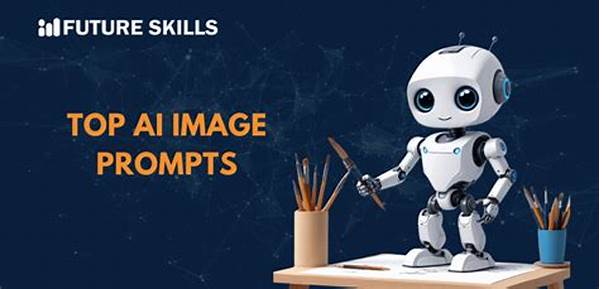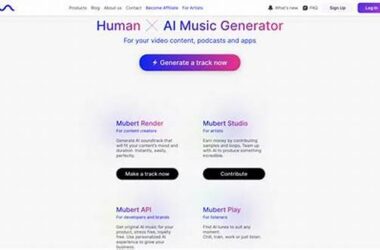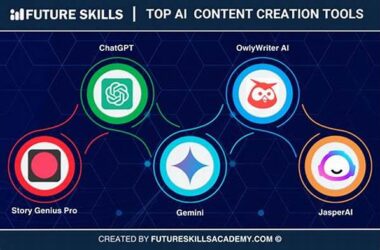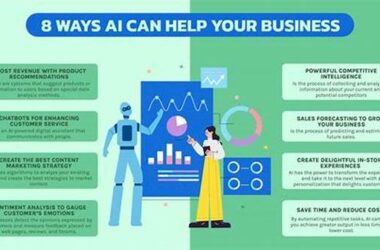The Unexpected Link: How Your AI Image Prompts Directly Affect Your Design Skills!
In the fast-evolving landscape of design and technology, artificial intelligence (AI) stands as a game-changer, revolutionizing the way designers conceptualize and create. However, what might surprise many is the unexpected link: how your AI image prompts directly affect your design skills! Yes, you heard it right. The very prompts that guide those gleaming pieces of AI-generated imagery can subtly steer and enhance your design prowess in ways you never imagined.
Read More : Ai To Help With Content Creation
Imagine you’re in a graphic design class. Your toolkit includes Illustrator, Photoshop, and now, an AI-powered design assistant. This assistant isn’t just delivering eye-catching visuals but also nudging you toward deeper, more critical thinking about your design choices. Suddenly, each prompt becomes a subtle whisper, prodding you to consider symmetry, balance, and color theory, weaving these fundamentals into your subconscious processes. It’s like having a silent mentor, constantly honing your skills as you work through each design challenge.
Through AI image prompts, designers are not merely observers but active participants in a feedback loop of learning and executing. As you input more refined prompts, you receive outputs that challenge your initial visions, pushing the boundaries of creativity. This synergy of human and machine goes beyond technical enhancement; it’s about evolving as a designer, developing a keener eye for detail, and gaining unmatched proficiency in digital creativity. The unexpected link: how your AI image prompts directly affect your design skills, lies in their ability to transform passive interactions into active learning experiences and foster growth in areas you might have overlooked.
AI’s Role in Enhancing Design Learning
From data analytics to predictive analytics, AI tools provide a foundation for creativity that stems not from spontaneity but from informed choices and innovative thinking. By leveraging AI-driven insights, designers can craft pieces not only rich in creativity but backed by the solid ground of data-driven precision. The unexpected link: how your AI image prompts directly affect your design skills, becomes evident as your designs reflect an amalgamation of artistic flair and analytical thought processes.
—
Diving Deeper into The Unexpected Link
Understanding the AI and Creativity Nexus
Have you ever wondered how your design skills leap to the next level? The answer might be simpler than you think. The backbone of this leap is that unexpected link: how your AI image prompts directly affect your design skills! What AI brings to the table is not just about speed or efficiency; it’s about fundamentally altering how you perceive and interact with the design process. This subtle shift is akin to the difference between a tourist and a traveler; while the former hurriedly checks off items on a list, the latter immerses deeply into the culture, embracing every nuance.
As you employ more AI tools in your design process, they morph from being mere utilities into partners in creativity. This partnership drives you to push creative boundaries, exploring uncharted territories in design that once seemed daunting. Imagine a scenario: You feed an AI tool a prompt, and it produces an innovative output that takes your design to unanticipated heights. This outcome isn’t accidental; it’s the result of an iterative learning curve, bolstered by AI assistance.
Enhancing Creativity: The AI Contribution
AI’s contribution to enhancing creativity is immense. As it churns through data, providing you innovative designs, it encourages you to think beyond conventional methods. This symbiotic relationship is proving vital in modern creative platforms. When designers start incorporating AI-generated elements into their workflow, they explore new aesthetics, color schemes, and thematic executions, alongside understanding the impact of these elements on real-world user interaction.
The Future of Design Education
The integration of AI into design education is already redefining creativity norms. As educators, leveraging AI-provided insights can help refine curricula, making learning modules more adaptable and personalized. Students who engage with AI tools grow not only in technical aptitude but in adaptability, critical for the ever-changing design landscape. The unexpected link: how your AI image prompts directly affect your design skills, lies in this transformation from a static learning environment to one where AI assists in nurtabling informed design choices, equipping students with tools to lead future design trends.
Now, more than ever, design students are stepping into an era where technology doesn’t just support creativity—it cultivates and coaxes it forward. This union between AI and design education is not just a trend; it is the groundbreaking pathway leading the charge into the creative future of innovation and automation.
Bridging AI into Every Day Design
From professional practice to educational environments, the role of AI continues to evolve, adapting to address the increasing demand for more personalized and efficient design practices. With the unexpected link: how your AI image prompts directly affect your design skills, it is evident that the integration of AI-based insights is fostering a transformative era in design dynamics. It’s about leveraging the synergy between the designer’s intuition and AI’s groundbreaking capabilities to redefine what’s next in design innovation.
—
Discussing “The Unexpected Link”
—
The Role of AI: A Designer’s Perspective
In today’s rapidly changing world, where technology seamlessly intertwines with creativity, the influence of AI on design cannot be overstated. Indeed, the unexpected link: how your AI image prompts directly affect your design skills! AI doesn’t remake a designer’s role; it reinforces what they can achieve, aligning technical capabilities with creativity to enrich aesthetics.
AI’s scope in design extends beyond mere visualization; it is about feeling the essence and translating it into a form that resonates with audiences. When designers grasp this nuanced understanding, the AI becomes an indispensable repository of innovative visual ideas, exciting compositions, and emotionally evocative graphics. Many designers testify to the newfound freedom they experience through AI, allowing them more time to refine concepts and step away from monotonous tasks.
Real-world Implications of AI in Design
As AI permeates every aspect of the design world, its practical ramifications continue to unfold. The unexpected link: how your AI image prompts directly affect your design skills is increasingly acknowledged as essential in creating designs that are more advanced, consumer-friendly, and interactive. With time, AI-powered tools are becoming an integral extension of a designer’s creative thought process, offering limitless opportunities for innovation.
Columns within AI designs dynamically shape user experiences, ensuring each digital interaction sleekly reflects what has been embedded into the AI programming. Mirroring creativity with efficient technological understanding is propelling this field into exciting new terrains.
—
Unveiling the AI Magic: Impactful Discourses
1 H2 and 1 H3 Integration
AI’s ability to mirror human creativity opens a world of innovative exploration, ensuring designs rooted in both creativity and efficiency stand unrivaled in today’s market. The unexpected link: how your AI image prompts directly affect your design skills continues to redefine the baseline for what’s achievable in design, beckoning creatives to explore further, enrich their processes, and redefine benchmarks in aesthetics.



